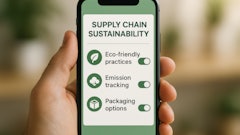
Amnesia and misaligned incentives may be among our worst enemies when it comes to building supply chain resilience for the long haul.
History says we tend to return to business as usual in due course following the aftermath of a crisis. Naturally, this includes returning to the bias toward under-diversified supply chains, a topic explored in more than one study. Following major disruptions, identifying a risk management solution becomes top priority, and investments are made to fortify the supply chain, including diversifying the supplier base. Over time, however, we also tend to underestimate these disruptive events’ long-term impact and forget the lessons learned once they become a distant memory.
But, the Coronavirus disease (COVID-19) is different. So different in fact that we may have reached a tipping point to re-engineer our end-to-end chains at scale. An unprecedented global event with its initial epicenter in China, the well-calibrated site of the world’s manufacturing ecosystem, COVID-19 is like nothing ever experienced before. The havoc wreaked by the pandemic is as fresh today as it was in March and its consequences are poised to be palpably felt well into 2021 and beyond.
Even before the pandemic, powerful environmental, technological and political forces were already fueling a redesign of supply chain strategies and operations. The geopolitical undercurrents against open trade that preceded COVID-19 spurred businesses to find ways to manage tariffs and other government-imposed cost regimes. Add to this the alarm bells that scientists and researchers have been sounding about various global risks, and you have the ripest conditions yet to inspire business leaders to replace the “way things have always been done” with a more resilient and efficient corporate value chain.
Evolving supply chain risks
Given our increasingly complex and interconnected world, sudden shocks are more probable than ever. Every 3.7 years on average, businesses can expect a supply chain disruption that lasts at least a month, and the most serious of these can have severe financial consequences, according to a 2020 McKinsey analysis. The good news is that businesses may finally realize that they need to make significant investments to protect their supply chain from a wide variety of modern-day threats.
Climate change is chief among these risks. Scientists have warned of more frequent and extreme weather events. These problems can severely compromise upstream and downstream inputs, from labor to critical infrastructure like roads and transport systems. Accordingly, business leaders are recognizing climate change fallouts. Climate issues now rank as one of the Top 5 risks by probability for the first time since the World Economic Forum (WEF) began surveying stakeholders for its annual Global Risk Report. Similarly, WEF’s 2020 Regional Risks for Doing Business Interactive Map shows senior leaders are paying more attention to environmental-related risks.
In the virtual realm, large-scale cyberattacks can also cripple supply chains. The increased proliferation and severity of targeted attacks remain a key consideration for supply chain professionals.
As the pandemic has demonstrated, a crisis can wreak havoc on a global scale and over-reliance on a consolidated supply source can come at a high cost. Managers would also do well to assess their top risks and understand the corresponding risk profiles for each supplier. With multiple uncertainties on the horizon, putting security measures along the value chain is a must, not a nice-to-have.
Volatile regulatory environment requires diversification
Global government’s incentives, mandates and trade tariffs also have the potential to drive large-scale supply chain reorganization.
In September, the European Union joined the chorus call for regionalization, amplifying the need for “strategic autonomy” and the ability to “secure raw materials supply" in a series of European Commission summits and communiques. These talking points are part of Europe’s broader plan to develop resilient supply chains, strengthen the sourcing of raw materials within the region, and reduce dependencies on other countries. In a similar vein, President Trump issued an executive order for the United States to secure precious minerals production capabilities in partnership with industry leaders. Meanwhile, Japan earlier this year earmarked funds to incentivize businesses to diversify their supply base throughout the world and repatriate their production ecosystems.
Businesses can protect their operations from government regulations by regionalizing their supply chain.
Offsetting risks and trade barriers
If the pandemic has taught supply chain managers anything, it is that an over-reliance on any one partner, country or region can lead to major disruptions. Global businesses may opt to invest in a diversified supplier base or migrate their operations to regional markets in a bid for long-term resilience.
The imminent global risks we are facing coupled with current trade barriers present an opportunity to take proactive measures to strengthen our supply chains. Devising a continuity plan before the next disaster strikes can help minimize disruptions. Businesses can take steps to earnestly plan for black swan events, capitalizing on the fresh lessons learned from COVID-19 to explore alternative ways forward.
The critical precursor to tackling all the challenges facing supply chain managers will involve managing key tradeoffs, including striking a balance between security and costs so that your supply chain can withstand more frequent disruptions.



















